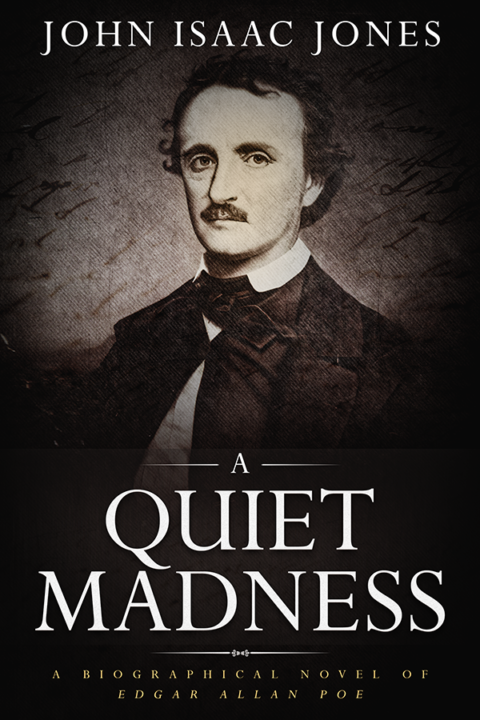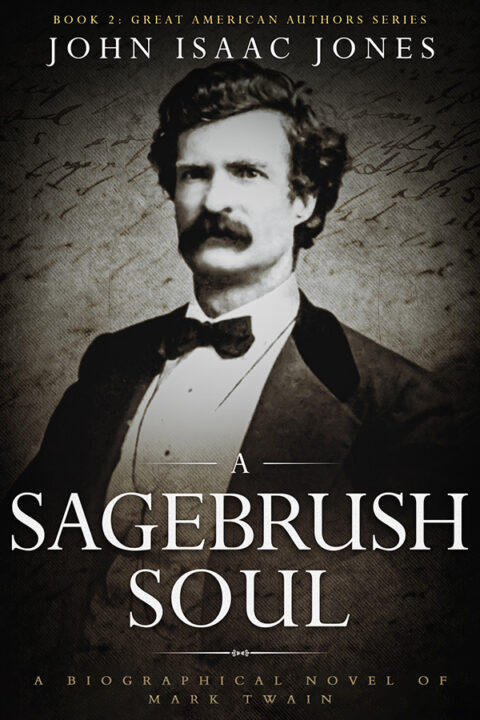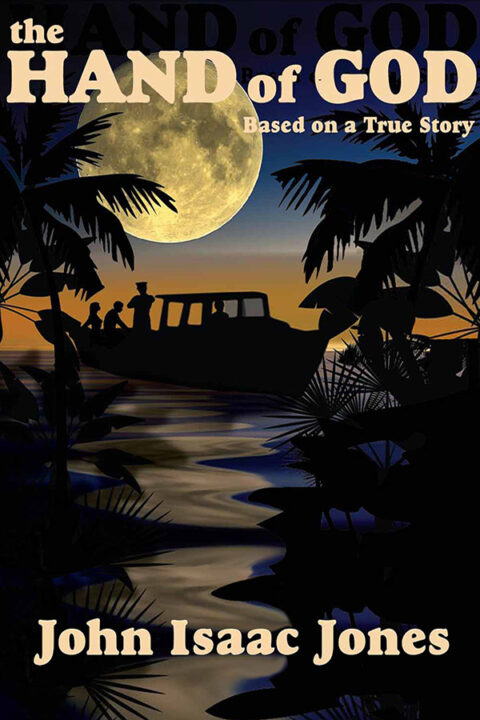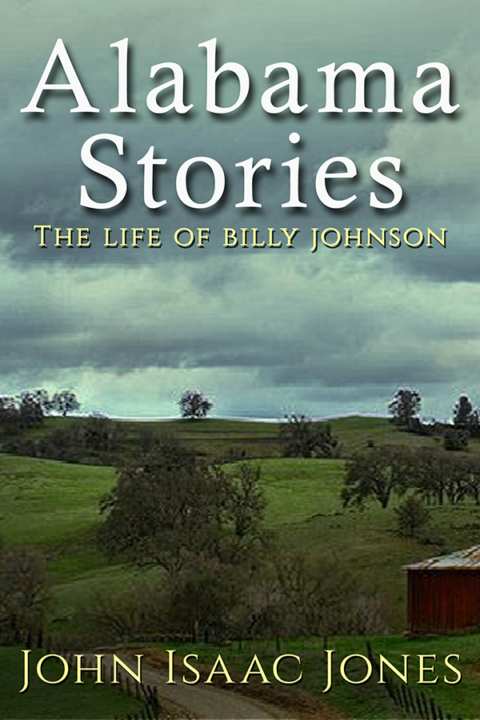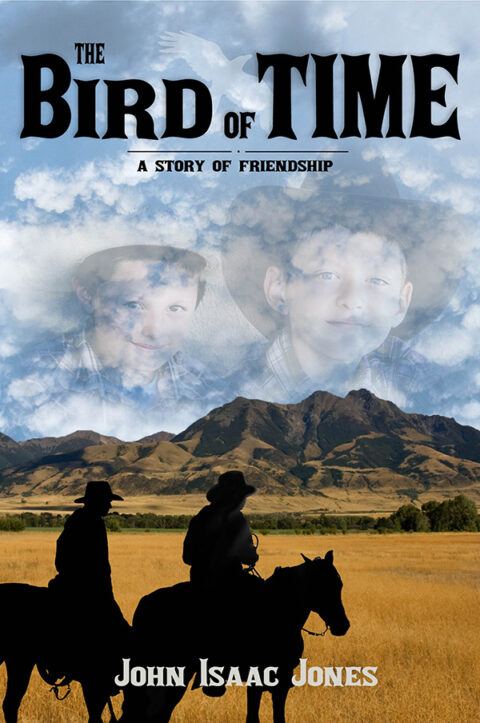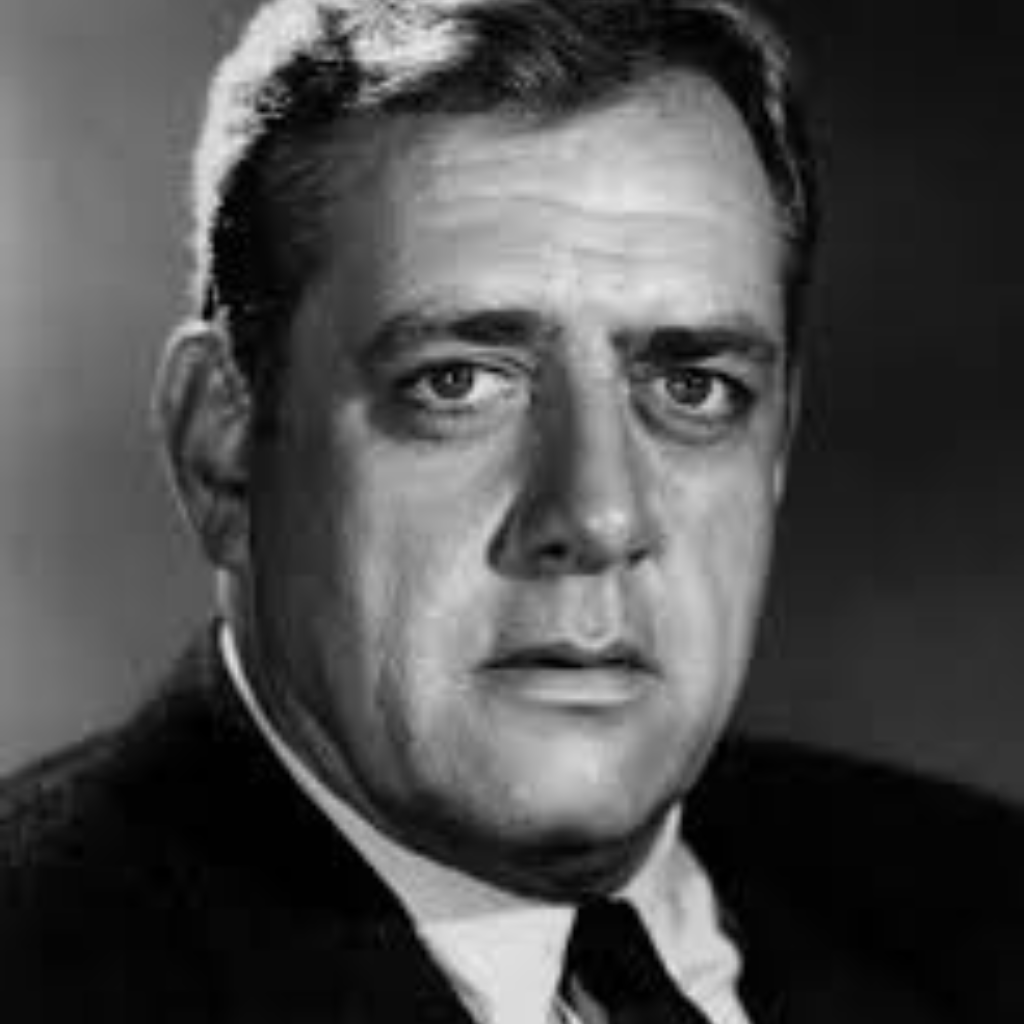
Homosexuality had been an integral part of Hollywood culture since the inception of the motion picture industry. From Hollywood’s earliest days, thousands upon thousands of gay men had proven themselves in behind-the-camera posts such as casting, wardrobe, makeup, cameramen, and even as directors and producers. When a gay man became a major box office star, the studio bosses expected and even demanded that the star’s sexual orientation be kept a closely guarded secret. After all, Hollywood’s leading men were expected to portray the type of virile male that made women swoon and men cheer. Any hint that the actor was not a macho man hunk was absolutely not tolerated in public.
Actor Raymond Burr, the subject of this story, learned early on as his star rose in Hollywood, that his sexual orientation could wreck his career. His life was a sad and ongoing battle to hide his homosexuality.
A native of Canada, little was known about Burr’s childhood. His father ran a hardware store and his mother was a music teacher in British Columbia, but beyond that, few hard facts were available. Although there were numerous stories about trips to China with his parents and tales of various marriages and children, the only fact that could be proven about Burr was that, as a small boy, he would spend endless hours in the family garden growing and cultivating roses.
As an adult, Burr was a burly, gravel-voiced bear of a man who broke into Hollywood as a heavy during the film noir craze of the fifties. Breaking bones and making violent threats was his stock in trade during those years and he appeared in more than forty, mostly gangster, films with some of the biggest stars of the day. In 1960, he was cast in the title role of Perry Mason, the most famous defense attorney in television history that always won his case with a daring last-minute on-the-stand revelation or confession.
The same year he got the contract, Raymond met Robert Benavides, an aspiring young actor and Korean War veteran who had a job on the series. They quickly became lovers and, shortly afterward, Raymond got Robert a permanent, behind-the-camera spot on the show that eventually led to him becoming a producer. Although they would be “partners” for more than thirty years, they both knew they had to keep their relationship a closely guarded secret.
Over the ensuing years, a conspiracy of lies and fabrications involving publicists, show regulars, gossip columnists, and even Raymond himself managed to keep his secret hidden. Publicists regularly planted stories that he was dating various young starlets and, during the late fifties, even arranged dates between Burr and several beautiful aspiring actresses so directors and producers could see them on the arm of a big star. Although a sham, it was a win-win for all parties.
In truth, Burr was briefly married to an actress during his early days in Tinseltown. Although the union was brief, this information was played up front and center in all of his professional bios and press releases. Hedda Hopper, the most famous gossip columnist of the day, never divulged his secret because her son William played Perry Mason’s sidekick private investigator on the show. When regulars on the show were asked about Burr’s homosexuality, they always dodged the subject with the comment, “It’s none of my business.”
Over the years, Raymond and Robert built a vast business empire that included exotic orchids, fine wine, seashells, Portuguese water dogs, and extensive real estate holdings, which included homes in LA, Hawaii, and an island in the South Seas. These business interests enabled them to live the life of royalty. In 1974, they bought an old farm in Sonoma’s Dry Creek Valley and developed it as a winery that was named after Burr upon his death and still bears his name.
While Burr was active to some degree in all of their businesses, his favorite was the orchid business where he cultivated and crossbred exotic orchids. His holdings included nurseries in California, Hawaii, the Azores, and the South Seas. His favorites were exotic black orchids, and Burr would spend endless days in his California nursery, making copious notes and studying the characteristics of various sub-species. Over the course of his work, he added more than 1300 new species to the worldwide catalogue.
“The genome of the rose is child’s play when compared to the complexity of the orchid genome,” he once said. “Studying the intricacies of the orchid genome is like listening to a Beethoven symphony.”
In late 1992, Burr was diagnosed with kidney cancer and doctors urged that the cancerous kidney be removed. Only days after the surgery, he began experiencing excruciating pain and, after further examination, doctors reported the cancer had spread into the lungs and liver and was now inoperable. At the news, Burr said he wanted to return to the Sonoma ranch to spend his last days.
Only days after this story broke, Simon called me.
“Perry Mason is dying,” he said. “We have a source in Santa Rosa who is friends with the nurse in attendance. All you got to do is go there and wait until he dies. Don’t hesitate to push her for details. We’re paying her lots of money for the exclusive story.”
The following day, I was on a plane to Healdsburg, California to meet the source. At the meeting, we agreed she would call me twice a day over the following week with updates on Burr’s condition. If he died, she was to call me immediately. On Friday afternoon, she called and reported Burr was dead. I asked about his final hours.
This is the story she told.
On the morning of September 3, 1993, Burr, who had been on a morphine drip for over two weeks, awoke, turned to Robert, and asked about the status of the ranch’s chardonnay grapes, the livestock, and his beloved orchids.
Robert knew the end was near, and his eyes filled with tears as his long-time partner asked questions about ranch operations as if he were going to be there forever.
“What about the Bulbophyllum Filiforme specimens in nursery number four?” Burr asked. “We had thirty-two new specimens in early August. Are they healthy and blooming?”
“They’re fine,” Robert replied.
A long silence.
“Ray,” Robert said tenderly, taking his hand, “I wanted to thank you for the wonderful life we’ve had together. I couldn’t have asked for a more wonderful friend and partner.”
“You realize,” Burr said, “the Filiforme has to have a constant temperature of at least 64 degrees or they’ll wither and die. As natives of West Africa, their genome requires much warmer temperatures than other orchids.”
“Yes, Ray,” Robert replied. “I know, but this is not really the time to be discussing business. We should—”
“I can’t wait until the black Filiforme are adult plants,” Burr continued. “The differentiation between the jet black colors and the green is absolutely amazing. Once we have adults, I want several brought into the ranch house. Maybe one in the sitting room by the zebra and another on the Italian marble table beside the fireplace.”
“Ray,” Robert said again, trying to get his attention.
“No, on the mantel; that’s where I want them,” Burr continued. “I can see them now, those glossy black colors against the royal blue wallpaper.”
“Ray,” Robert said. “I’m trying to say goodbye.”
“And what about the pink Orchondrinea?” Burr said. “Are the nursery workers aware of their sunlight requirements?”
Robert could see he was getting nowhere.
“You never listen to me,” he said sadly.
“Now be sure you tell Carlos that the newer pink Bienchadea orchids in nursery number six require…”
Suddenly, the diatribe stopped. For a moment, Burr looked straight at Robert as if he were about to say something important, then he slowly slumped backward on his pillow. Around noon, he slipped into a coma and died.
The following week, when the story was printed, there was only a tiny blurb on the front page which read: “Raymond Burr’s Final Hours!!” Inside, however, the story got a full-blown centerfold spread.
The headlines blared: “Perry Mason Makes Deathbed Request!! Long-time Lover Sadly Watches Famous Actor Die!!” There was even a photo of me with my byline.
His obituary, which appeared in newspapers and magazines throughout the world, represented little more than the fabrications, the lies, and half-truths which had been disseminated over the years by publicists and Burr himself. The conspiracy to hide the truth about Burr’s homosexuality was complete.
Only after his death did books and magazine articles start to print the truth. Interestingly enough, at the time of his death, Hollywood had considerably softened its posture on homosexuality, probably because of the massive publicity generated by the AIDS epidemic. In the late eighties and early nineties, studios and big stars felt it was good public relations to support AIDS projects. While several big stars and studio executives were openly gay, the unspoken strictures that Burr had faced were somewhat loosened. Burr, with an intricately woven web of protective lies and half-truths, had borne the brunt of the discrimination and had weathered it quite well.
****
(This excerpt was taken from my book Thanks PG:Memoirs of A Tabloid Reporter which retraced my twenty years as a reporter for the National Enquirer. You may buy the book at https://tinyurl.com/2zdhru92
